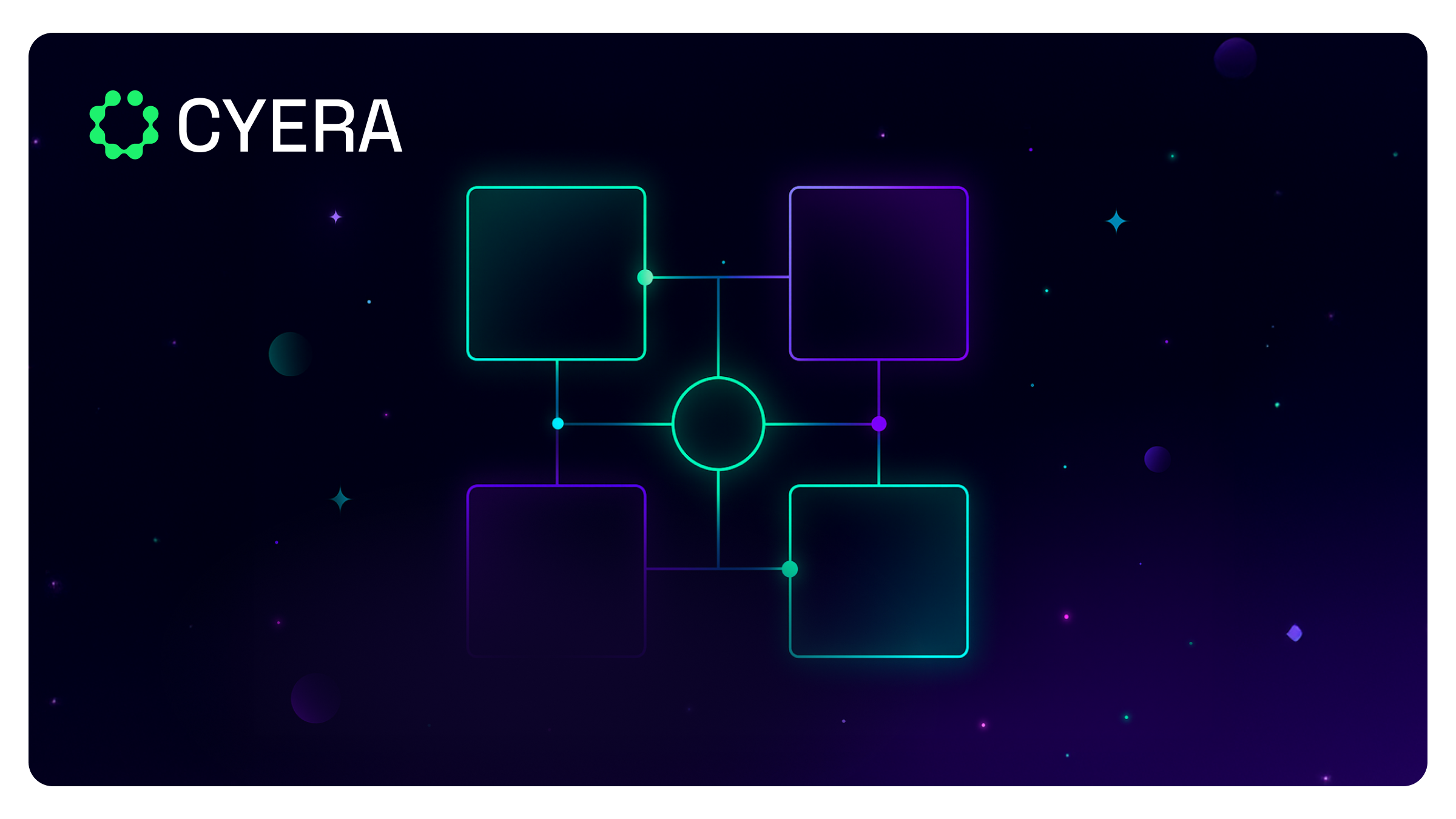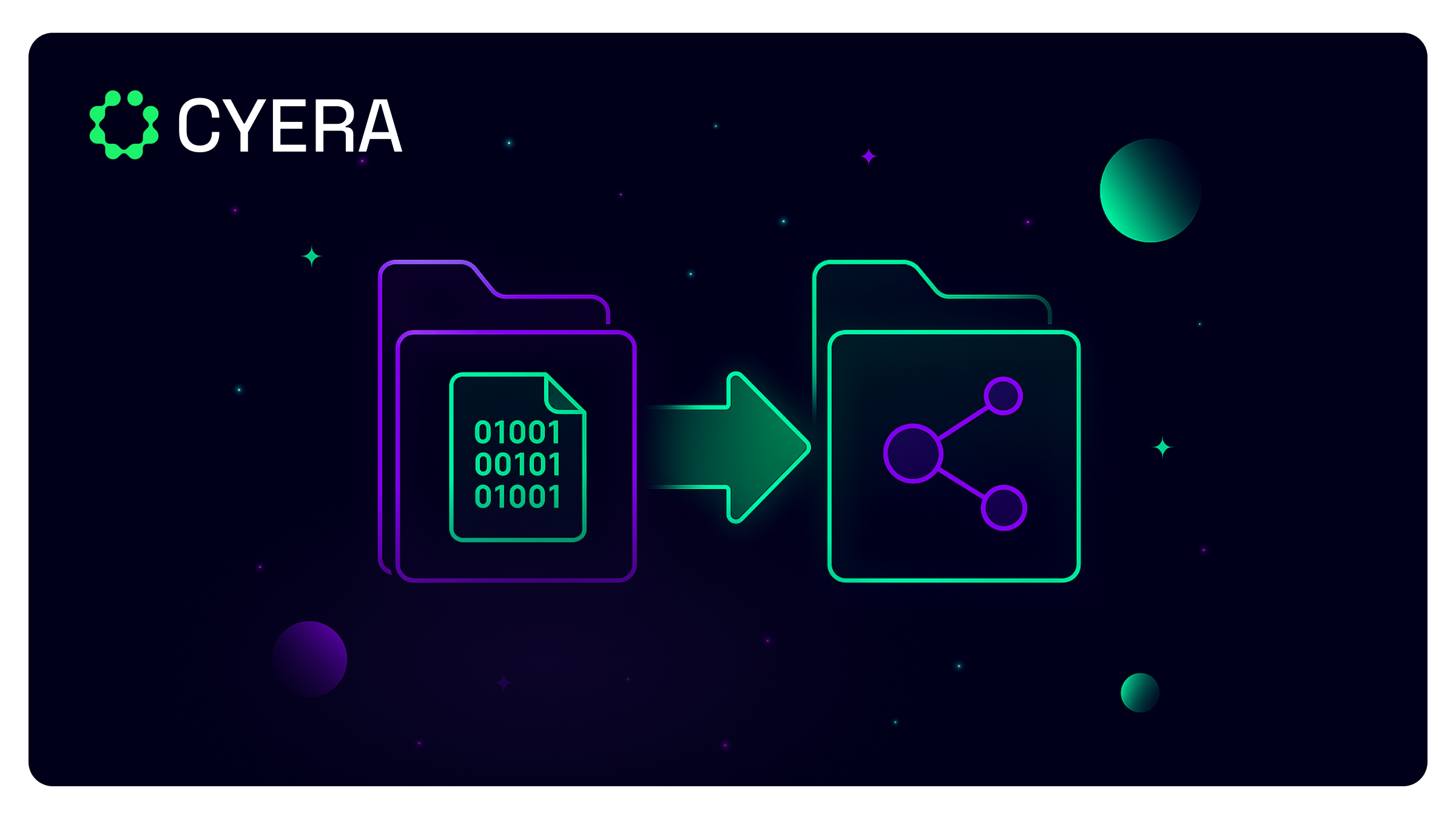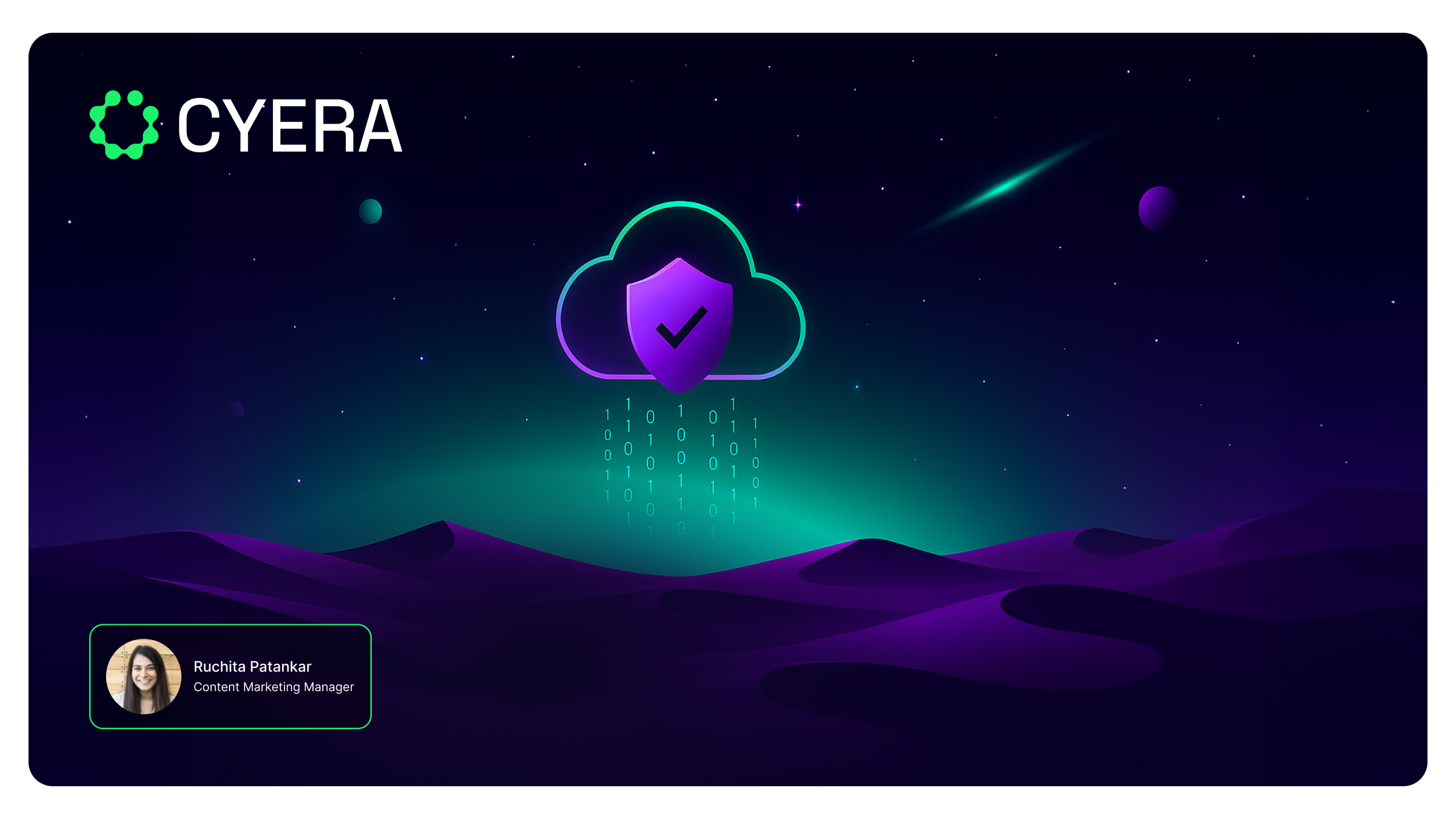What is the DSPM Magic Quadrant?

As more organizations move sensitive data to the cloud, the need for focused data security has surged. Data Security Posture Management (DSPM) addresses this need by giving security teams the tools to find, classify, and manage risk across complex environments.
While Gartner hasn't yet released a formal Magic Quadrant for DSPM, the category is gaining recognition through its Peer Insights reports.
In this guide, we explain what the DSPM Magic Quadrant is and why it matters. We also discuss how to evaluate vendors and which providers are leading the way in data security.
Understanding Gartner’s Magic Quadrant Framework
Gartner's Magic Quadrant is a research method used to evaluate technology vendors. It places vendors on a chart with two axes:
- Y-Axis: Ability to execute (how well they can deliver today).
- X-Axis: Completeness of vision (how strong their future plans are).
The chart is divided into four quadrants:
- Leaders: Companies that are strong in both execution and vision.
- Challengers: Companies that are good at executing but may lack a strong future vision.
- Visionaries: Companies with a strong vision for the future that may have limitations in current execution.
- Niche Players: Companies that focus on a small segment or have limitations in both execution and vision.
The result is a visual summary that shows which vendors lead, follow, or fall behind. It's a widely used tool for benchmarking providers in both new and mature markets.
The Magic Quadrant is widely adopted because it distills complex research into a single visual and narrative. For enterprise buyers with limited time, this format helps make fast, informed decisions. It also adds a level of third-party validation that can support internal buy-in or procurement processes.
A dedicated DSPM Magic Quadrant has yet to be released. However, Gartner has spotlighted the category through its Peer Insights “Voice of the Customer” report for DSPM.
This signals increasing traction for DSPM vendors and reflects how customers are rating their experiences with available platforms. It also gives early visibility into how the market is forming and which players are gaining attention.
What is Data Security Posture Management (DSPM)?
DSPM is a type of cybersecurity tool designed to help organizations understand and protect their sensitive data wherever it lives. That includes data stored in the cloud, on physical servers, or across hybrid environments.
What makes DSPM different from older tools is its focus. For example, traditional tools like Data Loss Prevention (DLP) or Cloud Security Posture Management (CSPM) focus on the systems or infrastructure. On the other hand, DSPM focuses on the data itself: what it is, where it is, who has access to it, and whether it's at risk.
Here are some of the core features of DSPM platforms:
- Continuous data discovery and classification: DSPM tools automatically scan your environments to find all types of data (structured and unstructured). They classify it based on sensitivity (e.g., personal information, financial records, intellectual property).
- Shadow data detection: These tools can uncover forgotten, duplicated, or unauthorized data copies, also known as shadow data, which often go unmonitored and become a hidden risk.
- AI/ML input governance: As companies feed data into large language models (LLMs) and AI systems, DSPM helps track and control what data is being used. This helps reduce exposure and meet governance standards.
- Risk scoring and policy enforcement: DSPM platforms assign risk levels to data based on factors like who can access it, whether it's encrypted, and if it's being stored properly. They also apply security policies to help reduce risk automatically.
- Compliance mapping (GDPR, HIPAA, etc.): By identifying which data is subject to regulations, DSPM tools help teams stay aligned with privacy and compliance requirements. This makes audits and reporting much easier.
DSPM has become especially important as data sprawl increases. With more data being generated, stored, and moved across different platforms, security teams need better ways to keep track of it while ensuring sensitive information doesn't fall through the cracks.
This isn't just theoretical. DSPM tools help solve real issues that arise in everyday operations.
For example, a finance team might unknowingly store sensitive payroll data in a shared cloud folder without access controls. DSPM tools can flag this as high-risk and automate remediation before it becomes a compliance issue.
For a deeper dive into DSPM, take a look at our What is DSPM? glossary.
Why the DSPM Magic Quadrant Matters
With so many new DSPM vendors in the space, it's not always clear which ones are fully compliant and ready for large-scale enterprise use.
Once published, the DSPM Magic Quadrant will help security and risk leaders:
- Shortlist credible vendors: Teams don't need to spend weeks or months researching every option. Instead, they can use the Magic Quadrant to focus on vendors that meet Gartner's criteria for execution and strategy.
- Understand customer satisfaction trends: The Magic Quadrant is often informed by user reviews, market signals, and Gartner's own research. It reflects how real customers are experiencing each platform, not just how vendors describe themselves.
- Align security strategy with best-fit tools: As data security becomes more central to overall risk management, teams need tools that match their scale, complexity, and regulatory needs. The Magic Quadrant helps teams match their priorities with the strengths of different vendors.
On top of picking a vendor, security leaders can also use the Magic Quadrant to support internal budget conversations, justify technology shifts, and track long-term market direction.
What to Expect in a Future DSPM Magic Quadrant
When Gartner publishes a full Magic Quadrant for DSPM, it will likely evaluate vendors on a mix of technical capabilities, market traction, and long-term viability.
While the exact criteria are proprietary, previous reports suggest that several key areas will shape the rankings, such as:
- The accuracy and breadth of their data discovery.
- The level of automation they provide.
- How well they support multi-cloud and hybrid environments.
- Their ability to govern AI/ML inputs.
Integration with existing tools, support, and deployment experience will also factor in.
What may set leading vendors apart are features like advanced policy enforcement, strong regulatory mapping, and the ability to scale easily across large, complex organizations. These elements will matter as DSPM moves from early adoption into broader enterprise use.
Leading Vendors in the DSPM Magic Quadrant
While Gartner hasn't released an official DSPM Magic Quadrant yet, several vendors are already seen as key players in the space.
Cyera
Cyera is recognised for its forward-thinking approach to data security, designed specifically for cloud environments. It uses APIs to connect with cloud platforms, eliminating the need for endpoint agents.
Why it stands out:
- Cloud-native and API-first: Built to integrate with cloud infrastructure without slowing things down or requiring agents on every endpoint.
- Real-time, agentless data classification: Quickly identifies and labels sensitive data across environments without heavy setup.
- Support for AI/ML data governance: Helps organizations control what data is used in AI and machine learning pipelines. This reduces risk and helps organizations maintain oversight.
- Easy integration into existing tools: Works with SIEMs, IAMs, and SOAR platforms to fit into existing workflows.
- Fast deployment and high user satisfaction: Teams can roll out Cyera quickly and start seeing results in days, not months.
For large organizations managing diverse cloud environments, Cyera's approach provides flexibility without compromising depth. This makes it a strong fit for enterprise-scale deployments.
Varonis
Varonis has long been a leader in data security, especially for organizations focused on access, governance, and file-level visibility.
Key Features:
- Strong access visibility and automation: Tracks who is accessing what data, when, and why. It also automatically fixes over-exposed access permissions.
- Advanced analytics: Uses behavior-based monitoring to flag unusual activity and reduce insider risk.
BigID
BigID started as a privacy-focused tool and expanded into broader data discovery and classification.
Key Features:
- Compliance-first approach: Designed to help teams stay aligned with regulations like GDPR, HIPAA, and CCPA.
- Data coverage: Supports both structured and unstructured data across on-prem and cloud environments.
SentinelOne
SentinelOne is best known for endpoint protection. However, it now includes DSPM as part of its cloud-native application protection platform (CNAPP).
Key Features:
- All-in-one platform: Brings DSPM features into a broader system that includes threat detection, workload protection, and container security.
- Real-time visibility: Focuses on detecting risks across cloud infrastructure, often in real-time.
Other Recognized Vendors
The following vendors have also developed DSPM capabilities. They're typically focused on specific areas like privacy, encryption, or shadow data detection.
- Securiti.ai: Automates privacy and governance workflows often used in heavily regulated industries.
- Symmetry Systems: Provides deep, data-level insights with an emphasis on how data is used and accessed.
- Netwrix: Helps organizations uncover shadow data and assess risk across file systems.
- CipherCloud: Offers encryption and tokenization for SaaS platforms. It's useful for data residency and privacy use cases.
- Digital Guardian: Adds DSPM capabilities through its managed data protection services.
How to Use the DSPM Magic Quadrant in Vendor Evaluation
The Magic Quadrant is only useful if you apply it to your specific context. When evaluating DSPM vendors, especially in a fast-moving category like this one, it's important to go beyond the chart itself.
Here are four steps to guide your vendor selection process:
Start with your data reality
Before reviewing vendors, take stock of your own environment with questions like:
- What types of data are you handling?
- Does it live in AWS, Azure, Google Cloud, on-prem, or a mix?
- Are you dealing with regulated data like healthcare records, financial details, or personal identifiers?
The answers to these questions shape what kind of DSPM platform you need. For example, if your organization operates in multiple cloud environments, you'll want a tool that can discover and classify data across all of them.
If compliance is a priority, look for features that support mapping to GDPR, HIPAA, or industry-specific frameworks.
Starting with your data landscape helps you filter out vendors that don't align with your infrastructure, scale, or risk profile.
Prioritize automation
A key benefit of modern DSPM platforms is their ability to reduce manual effort. Look for solutions that offer continuous scanning, auto-classification, and policy enforcement without constant intervention.
You'll also want to evaluate how easily the tool fits into your existing stack. Does it connect with your SIEM, IAM, or ticketing system? Can it trigger actions or alerts based on findings?
Tools that support API-first design and agentless architecture tend to be easier to deploy and maintain. In short, the less effort it takes to keep the platform running and useful, the more value you'll get from it over time.
Check customer feedback
Resources like Gartner's “Voice of the Customer” report are highly valuable for understanding how a vendor performs in real-world environments. They often reveal things that don't show up in a feature checklist (e.g., deployment experience, support quality, and how well the tool adapts to ongoing needs).
It's always good to look out for consistent themes across reviews, such as:
- Customers report seeing time-to-value quickly.
- Multiple reports of hidden costs or steep learning curves.
In particular, check for positive feedback from companies with a similar size or cloud setup to yours.
Shortlist based on core fit
Remember, not every vendor in the data security space is truly focused on DSPM. Some offer it as part of a larger suite or have only recently added it to stay competitive.
That's not necessarily a red flag. Yet, it's important to understand whether DSPM is a core strength or just one of many offerings.
Vendors that specialize in DSPM often provide more depth in areas like shadow data detection, AI data governance, and cross-cloud visibility. Others may excel in adjacent areas, like endpoint protection or general cloud security, but offer limited DSPM functionality.
When comparing vendors, consider whether the tool is built to solve your data-specific risks or whether it's trying to be a catch-all. This distinction can make a big difference in long-term fit.
Together, these steps help narrow the list of vendors to those that truly meet your needs. Whether you're preparing for a formal RFP or doing early research, applying the Magic Quadrant in this way gives structure to what can otherwise be an overwhelming process.
Conclusion
The DSPM Magic Quadrant reflects a major shift in how organizations approach cloud data security. As sensitive data spreads across environments and AI-driven systems grow, the need for focused, scalable protection is rapidly increasing.
While the official report is still pending, Gartner's early attention to the category shows its growing importance.
Vendors like Cyera are helping security teams take control of their data by offering DSPM platforms that work across clouds, reduce manual effort, and support compliance.
For companies facing complex data challenges, DSPM is quickly becoming an essential part of the security stack.
Erhalten Sie vollständige Transparenz
mit unserer Data Risk Assessment.


